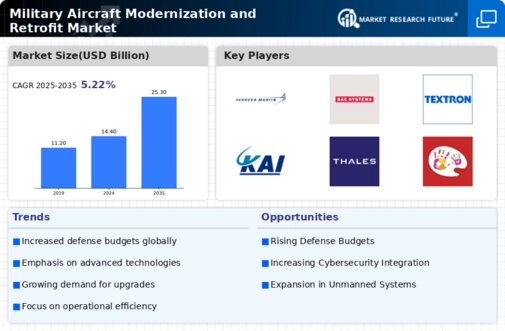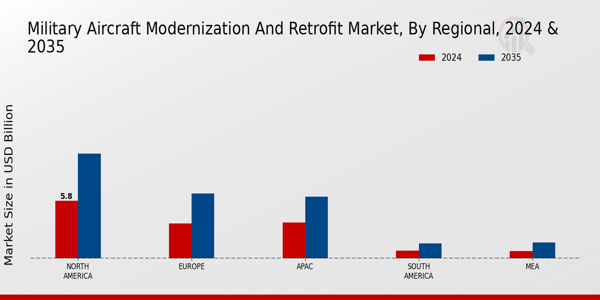The military aircraft modernization and retrofit market is increasingly becoming a pivotal facet of defense capabilities around the world as nations strive to enhance the operational longevity and effectiveness of their existing military aircraft fleets.
This market encompasses a range of services and products aimed at upgrading and refurbishing aircraft to meet contemporary warfare requirements, including weapons system integration, avionics upgrades, and structural enhancements.
As geopolitical tensions and military requirements evolve, the competitive landscape is intensifying, characterized by advanced technological innovations and strategic partnerships among major industry players.
Companies in this space are not only leveraging their engineering prowess but also engaging in collaborative efforts with governments and defense agencies to deliver solutions that enhance aircraft performance, reliability, and interoperability on modern battlefields.
Lockheed Martin holds a prominent position within the military aircraft modernization and retrofit market due to its extensive experience and strong technological capabilities. The company is recognized for its innovative approaches to upgrading military aircraft, ensuring they remain competitive in the face of emerging threats.
Lockheed Martin's strengths lie in its advanced research and development initiatives and the development of integrated systems that improve flight performance and situational awareness. This translates into enhanced mission capabilities for their customers.
Furthermore, Lockheed Martin has established itself as a trusted partner for various military programs worldwide, fostering long-term relationships that emphasize reliability and effectiveness. This strategic positioning allows Lockheed Martin to adapt swiftly to technological advancements and market demands, thereby reinforcing its competitive edge within this imperative sector.
General Dynamics is equally influential in the Military Aircraft Modernization and Retrofit Market, leveraging its vast expertise in defense and aerospace solutions to provide comprehensive modernization programs.
The company focuses on adapting legacy aircraft with cutting-edge technologies to meet current and future mission requirements. General Dynamics excels in tasks such as avionics modernization, system integration, and interoperability enhancements, ensuring that military aircraft maintain their operational readiness.
The robust infrastructure and skilled workforce of General Dynamics allow it to deliver efficient and effective retrofit solutions, thus enhancing the survivability and performance of defense fleets.
Its commitment to quality and innovation positions General Dynamics as a reliable provider within the military sector, enabling it to serve various governmental defense initiatives and respond effectively to the dynamic demands of the modern battlefield.























Leave a Comment